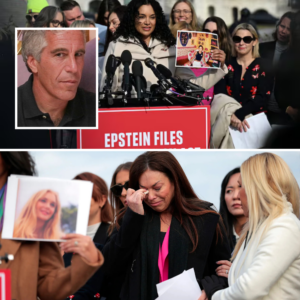Prime Video’s latest historical romantasy series is remarkably modern
Emily Bader as Lady Jane Grey in My Lady Jane. (Prime Video)
Warning: This contains spoilers for My Lady Jane
Lady Jane Grey, the real Lady Jane Grey, sat on the throne of England for a total of nine days in 1553 before she was replaced by her cousin, ‘Bloody Mary’, and eventually executed. But as the narrator of Prime Video’s My Lady Jane says at the start of the very first episode: “F*** that. What if history were different?”
Based on a 2016 YA novel (co-written by Brodi Ashton, Cynthia Hand, and Jodi Meadows), My Lady Jane imagines a very different history to our own, and not just because this Jane survives well beyond those initial nine days. What starts out as an alt-history becomes a full-blown fantasy when it’s revealed early on that some people can shapeshift into animals and said people have been ostracised by the rest of society.
Regulations known as the Division Laws decree that these Ethians, as they’re known, must hide in the shadows away from regular folk, aka Verities. It’s giving X-Men if the X-Men turned into badgers and spoke with a posh British accent.
While Jane herself is unable to shift into animal form, she does hope to shift policy in favour of the Ethians as her unexpected rise to power brings Lady Grey a chance to change things for the better from within the monarchy.
Being the forward-thinking protagonist she is, Jane was pro-Ethian even before her maid Susanna and new husband, Lord Guildford Dudley, were revealed to be Ethian too. As the series progresses, we find out that more and more Ethians have been hiding in plain sight, cementing this idea of the Ethian experience as a metaphor used to represent various marginalised communities who are feared and hated by the bigoted, tedious majority.
Race and disability factor in at points, of course, although there are some specific moments which speak to queerness in particular. In episode five, for example, we hear about a cook’s son who was sent to an “establishment” in London where he could be “cured” of this Ethian affliction. The cure? Being forced to experience agonising pain while in animal form so his body eventually rejects it completely. Does it work? Of course not. And that’s the point.
Jane is also looking for a cure, albeit to help “fix” her husband who can’t control his Ethian shapeshifting. But as Susanna rightly points out, “There is no cure. You should never question our right to exist ever again.”
Based on a 2016 YA novel, My Lady Jane imagines a very different history to our own. (Prime Video)
The parallels between this and gay conversion therapy are blunt but accurate. No-one can or should be cured of their queerness because there is nothing wrong with being queer. It is not an affliction and it’s not a choice either. Any attempts to change a person fundamentally in that way just causes irrevocable harm
It’s, well, let’s say “interesting” to hear a period drama address such concerns at a time when gay conversion therapy is still legal now in modern-day England, despite the pain and trauma it causes and despite the government’s many promises to end it.
My Lady Jane is remarkably modern in that regard, centring queer issues from today through a historical lens, but it’s not just pain or bigotry that define the Ethian experience as a queer metaphor here.
King Edward, a naive royal on a journey to discover his own queerness, is taken to an Ethian pub where those exiled from his kingdom find community and a sense of belonging. It’s a safe space in the same vein as a queer bar or club, and the underlying symbolism of it all is heightened by the fact that Fitz, the object of his desire, is the one who takes him there.
“You can’t ban people,” says the extremely cute gay Ethian lad. “No matter how hard you try.”
As the series progresses, there are elements of My Lady Jane that speak to queerness and the queer experience, namely through shape-shifters known as Ethians. (Prime Video)
And he’s right to say it. But the focus of this scene is one of resilience rather than pain. No matter what laws might be in place, no matter how much society demonises the Ethian people, they still find warmth and love and safety with each other.
Amidst all the bigotry and prejudice, it was important for My Lady Jane to highlight the joy that’s also embedded in queer identity, something which is expanded on more and more as Fitz and the King grow closer.
Towards the end, Edward comes to realise that nothing else has pierced his soul in the way “that feline fella just did,” and then they make out. A lot. Sure, they’re also on a quest to save Jane, stop Mary, and reclaim Edward’s rightful place on the throne, but in the immortal words of Jennifer Coolidge, “Gays just know how to do stuff,” and that includes multitasking, it seems.
It’s quite unusual to see a show navigate queer romance with joy and hope while simultaneously tapping into the pain queer people endure via a thinly veiled metaphor that’s running adjacent alongside the kissing and the pecs. Does it all work though? Yes and no.
The show’s parallels between the experiences of Ethians and gay conversion therapy are blunt but accurate. (Prime Video)
While the first season ends on many a cliffhanger, it also ends with the Ethians arriving just in time to fight back and save the day, because as we mentioned, the gays just know how to do stuff. Whether they’re banding together to battle Mary’s bodyguards or banding together to make out some more — watch as Edward and Fitz enjoy “their hard-won freedom” — there’s strength to be found in queer camaraderie.
But if a second season does materialise, I would just hope to see some more complexity when it comes to the Ethians specifically.
Despite Edward being a Black, gay king in Tudor England, intersectionality doesn’t really come into play at all in My Lady Jane, which is a shame. Perhaps the flexibility of the Ethian metaphor is a bit too broad and simple when it comes to tackling something deeper and more adult beyond the show’s YA trappings.
But you know what I say to that? F*** that. If My Lady Jane can imagine history differently, it can also reimagine its own history differently and take strides to move this conversation forward more in a potential season two.
My Lady Jane is streaming on Prime Video.




